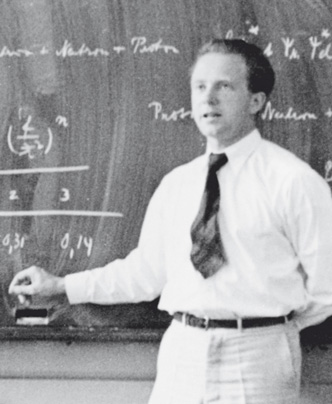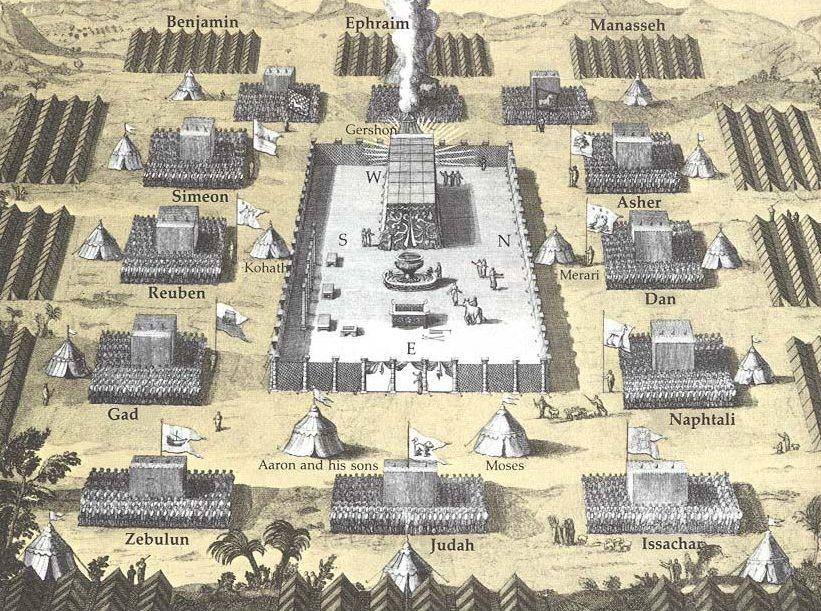And when the Tabernacle setteth forward, the Levites shall take it down; and when the Tabernacle is to be pitched, the Levites shall set it up… (Num. 1:51)
During the wonders of Israelites in the desert, the Tabernacle (Heb. “Mishkan”), existed as a sanctuary only during their encampments. Whenever they traveled, the Mishkan was taken down and disassembled to be carried by Levites during the journey. When G‑d commanded Moses to set the camp, the Mishkan was reassembled and set up again.
Let us fast forward some three-and-a-half thousand years to the beginning of the 20 c. It was a time of great intellectual turmoil. The discovery of the atom’s structure by Rutherford, according to which an atom resembled the solar system with a nucleus at the center and electrons orbiting the nucleus, was followed by intense research into the structure of atoms of various chemical elements. Every atom tested unexpectedly exhibited discrete spectral lines instead of the expected continuous spectrum. It was if atoms were able to absorb and emit energy only of certain discrete frequencies.
In 1913, Niels Bohr proposed an atomic model, in which electrons “orbiting” the nucleus in their orbitals could only occupy certain orbitals having discrete energy levels. (See my earlier post, Jacob’s Ladder.) Electrons could jump from one orbital to another (“quantum leaps”) but they could not be found in between. Nobody could understand why.

One night, on June 7, 1925, a junior colleague of Niels Bohr, young German physicist Werner Heisenberg, was walking in the park engrossed in thought. It was a dark night barely lit by sparse street lights. Suddenly, he saw a dark figure of a man emerge from the darkness as the man passed under one of the streetlights only to disappear again into darkness. A minute later the man reemerged near the next light and disappeared again. The figure kept on popping in and out of site as it appeared under a streetlight and disappeared into the night. Strange, thought Heisenberg, this man seems to only exist when next to a street lamp disappearing into darkness in between the lights. Of course, Heisenberg could trace in his mind the path along which that man was walking, but he was not visible in between the streetlights, as if he didn’t exist. Heisenberg couldn’t get the disappearing man out of his mind. And then it hit him like a thunderbolt—electrons in the atom behave the same way—they only appear on certain orbitals and, when jumping from one orbital to the next, disappear in between! Heisenberg rushed to his room and worked through the night putting this idea into the language of mathematics. He later wrote:
It was about three o’ clock at night when the final result of the calculation lay before me. At first, I was deeply shaken. I was so excited that I could not think of sleep. So I left the house and awaited the sunrise on the top of a rock.”
Matrix mechanics—the first form of quantum mechanics—was thus born. Subatomic particles obeying the laws of quantum mechanics behave not like objects we are familiar with. They exist only in certain states and “disappear” in between.
So too in the Sinai desert, the encampments of Israelites were discrete states, which they could occupy in the desert. The Mishkan, Tabernacle “appeared” (was reassembled and erected) when in one of these discrete states, and “disappeared” (taken down and disassembled) in between. In this sense, Mishkan represents a metaphor of quantum reality.


wonderful, I just re read Jacob’s ladder an it makes perfect sense….by the way, I hear that the the word Mishkan has a root in the word for gravity is this right?
Yes, indeed. In Hebrew, the force of gravity is ko’ach meshichah — the force to draw [down]. “Meshichah” and “mishkan” share the same root. The connection is obvious — Mishkan had the power to draw down G‑d’s presence, “Shechinah,” which also shares the same root.
I recommend you likutei moharan lesson 73, where Ravi najman explain gravity and the relation between the mishkan the Earth and the tzadick
Thanks. Unfortunately, I don’t have Likuttei Maharan in my library. I’d be grateful if you can email me a photocopy of this maamar.